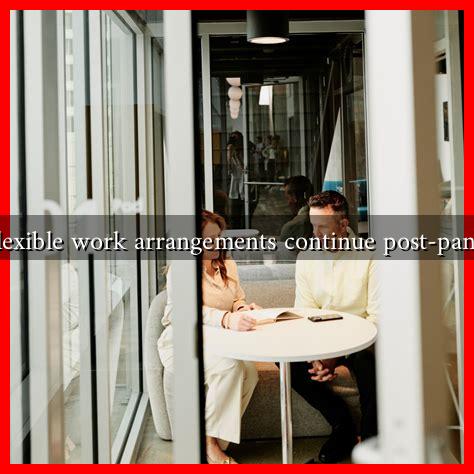-
Table of Contents
Will Flexible Work Arrangements Continue Post-Pandemic?
The COVID-19 pandemic has fundamentally altered the way we work, leading to a significant shift towards flexible work arrangements. As businesses and employees adapted to remote work, many began to question whether these changes would be temporary or if they would become a permanent fixture in the workplace. This article explores the future of flexible work arrangements, examining the benefits, challenges, and potential long-term impacts on the workforce.
The Rise of Flexible Work Arrangements
Before the pandemic, flexible work arrangements were already gaining traction, but the crisis accelerated their adoption. According to a report by McKinsey, 20-25% of the workforce in advanced economies could work remotely three to five days a week without a loss in productivity. This shift has led to a reevaluation of traditional work models.
Benefits of Flexible Work Arrangements
Flexible work arrangements offer numerous advantages for both employees and employers:
- Increased Productivity: Many employees report higher productivity levels when working from home due to fewer distractions and a more comfortable environment.
- Improved Work-Life Balance: Flexible schedules allow employees to better manage their personal and professional lives, leading to increased job satisfaction.
- Cost Savings: Companies can save on overhead costs, such as office space and utilities, while employees save on commuting expenses.
- Access to a Broader Talent Pool: Employers can hire talent from anywhere, not just within commuting distance of their offices.
Challenges to Consider
Despite the benefits, there are challenges associated with flexible work arrangements that organizations must address:
- Communication Barriers: Remote work can lead to misunderstandings and a lack of collaboration if not managed properly.
- Employee Isolation: Some employees may feel disconnected from their teams, leading to decreased morale and engagement.
- Management Difficulties: Supervising remote teams requires different skills and tools, which some managers may not possess.
Case Studies: Companies Leading the Way
Several companies have successfully implemented flexible work arrangements and are likely to continue doing so post-pandemic:
- Twitter: The social media giant announced that employees could work from home indefinitely if they choose. This decision reflects a commitment to flexibility and employee well-being.
- Salesforce: The cloud-based software company has adopted a “flexible-first” approach, allowing employees to choose their work environment while emphasizing the importance of in-person collaboration when necessary.
- Shopify: The e-commerce platform has declared itself a “digital by default” company, enabling employees to work remotely and focusing on results rather than hours spent in the office.
Statistics Supporting the Shift
Recent surveys and studies provide compelling evidence that flexible work arrangements are here to stay:
- A survey by Gartner found that 47% of organizations plan to allow employees to work remotely full-time post-pandemic.
- According to a report from Buffer, 98% of remote workers would like to continue working remotely at least some of the time for the rest of their careers.
- The World Economic Forum reported that 84% of employers are set to expand remote work options in the future.
The Future of Work: A Hybrid Model?
As we look ahead, many experts believe that a hybrid work model—combining remote and in-office work—will become the norm. This model allows organizations to reap the benefits of flexibility while maintaining some level of in-person collaboration. Companies like Microsoft and Google are already exploring hybrid models, offering employees the choice to work from home or the office based on their preferences and job requirements.
Conclusion
In conclusion, flexible work arrangements are likely to continue post-pandemic, driven by the benefits they offer to both employees and employers. While challenges remain, the successful implementation of flexible work models by leading companies demonstrates that it is possible to create a productive and engaged workforce in a remote or hybrid environment. As organizations adapt to this new landscape, the focus will shift towards finding the right balance between flexibility and collaboration, ensuring that the future of work is both innovative and inclusive.
For more insights on the future of work, you can visit Gartner.

